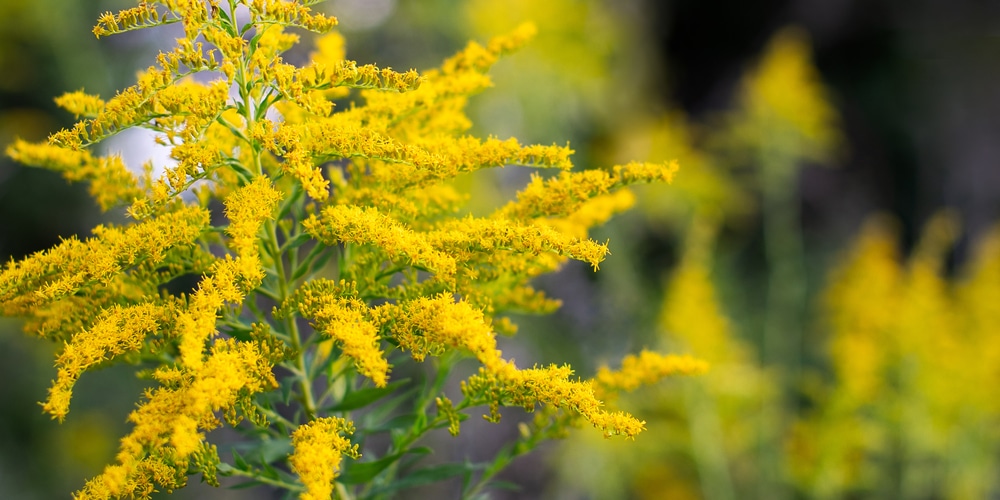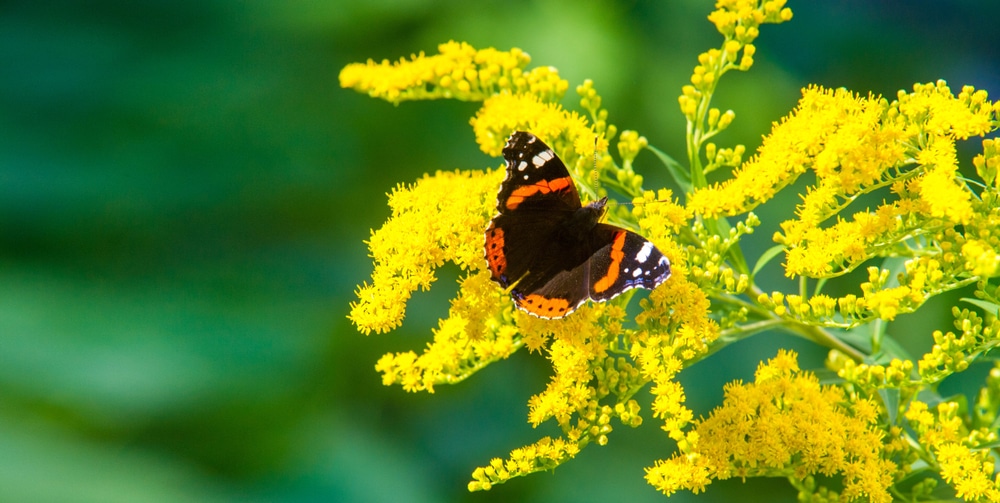Goldenrod is a beautiful yellow flowering shrub that blooms in the summer and fall. It is a perennial plant that will come back year after year. Goldenrod typically blooms in July and August in North America. There are slight variations in blooming time, depending on the variety of Goldenrod. This article will answer the question, ‘when does goldenrod bloom?’ We’ll tell you what to expect when growing the plant and look at how to care for goldenrod.
What is Goldenrod?
Goldenrod is a member of the Asteraceae family. The plant’s scientific name is Solidago which comes from the Latin word solido, meaning “to make whole or heal.” This is likely in reference to the plant’s historical use in herbal medicine.
Goldenrod is native to North America and can be found growing wild in fields and along roadsides. The plant is also popular for gardens as it is easy to grow and care for. Goldenrod can reach up to 5 feet in height and can spread to a width of three feet. It has long, slender leaves and yellow flowers which grow in clusters and bloom from late summer to fall.
When Does Goldenrod Bloom?
Goldenrod typically blooms in July and August in North America. The blooms are relatively long-lasting, and most plants will continue flowering well into the fall. There are a wide variety of goldenrod, and the shrubs bloom at slightly different times. The goldenrod ‘Fireworks’ variety, for example, flowers a little earlier than other varieties, in June and July.
The climate where you live may also affect blooming time. Goldenrods are hardy plants that can cope with cooler weather and will add color to your yard during the fall.
How to Grow Goldenrod
Goldenrod is very easy to grow as it’s tolerant of a wide range of soil types and can even grow in poor, dry soil. Goldenrod does best in full sun but will also tolerate partial shade. It likes to grow in acidic to neutral soil and thrives in USDA hardiness zones 2a to 8b.
The plant can be propagated by seed, division, or cuttings. To propagate by seed, sow the seeds in late fall or early spring. If you want to divide the plant, do so in early spring after the last frost date or in the fall before the weather gets too cold. Divide the roots into small sections, each with a few leaves and replant them immediately.
To propagate by cuttings, take 4 to 6-inch stem cuttings from new growth in late spring or early summer. Dip the cuttings in rooting hormone and plant in moist soil.
Goldenrod care
Goldenrod is a low-maintenance plant that does not require a lot of care. Water the plant regularly, especially during dry periods, and fertilize in the early spring with a balanced fertilizer.
Pruning
Cut the plant back to 6 inches above the ground in late fall or early winter to tidy up the plant’s appearance and encourage new growth in the spring.
Pests and Diseases
Goldenrod is generally a healthy plant that is resistant to pests and diseases. The plant can be affected by powdery mildew, rust, or leaf spot, but these problems are
rarely severe. Aphids, Japanese beetles, and caterpillars may feed on the leaves of the plant, but this damage is usually not significant.
Conclusion
Goldenrod is a beautiful, easy-to-grow plant that brings summertime cheer to any yard. It also looks great in a fall garden. Be sure to add this lovely shrub to your yard this year!

